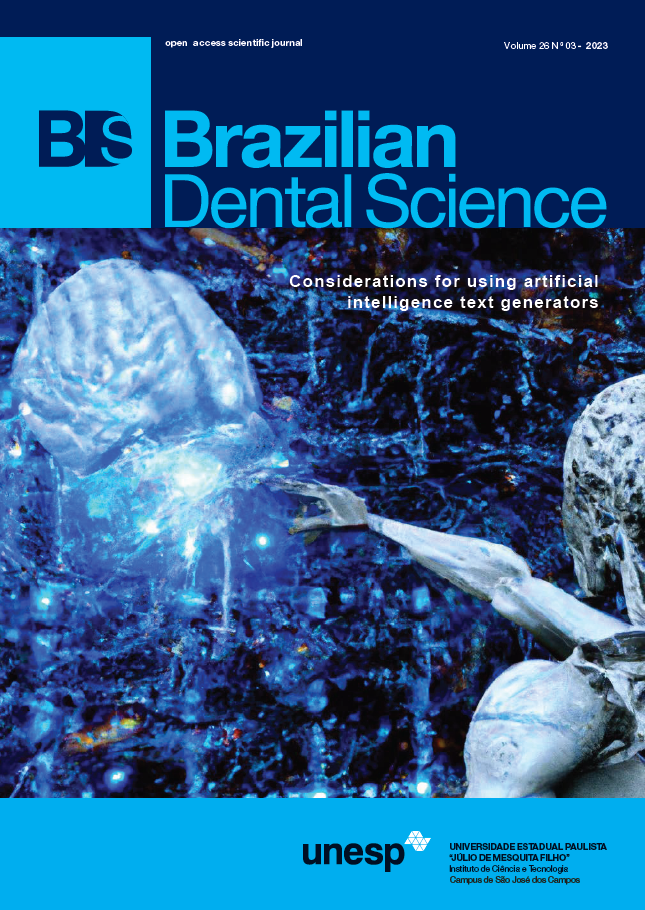Clinical study of different composite resin systems in Class I cavities (an 18-month randomized clinical trial)
DOI:
https://doi.org/10.4322/bds.2023.e3737Abstract
Objective: this double-blind randomized clinical trial evaluate the clinical performance of Thermo-Viscous
Bulk Fill composite, Self-Adhesive Flowable composite, and Filtek Bulk Fill Composites restorations in Class I
cavities over a period of 18 months. Material and Methods: twenty individuals between the ages of 30 and
45 participated in this research. Each patient should have at least three occlusal Class I carious lesions on their
molars. They were dispersed at random, with n=20 teeth representing each tested material. Group I (Futurabond
M+ and VisCalor Bulk Fill which heated in a viscolar dispenser at 68 °C for 30s and placed in a 4 mm thickness),
Group II (Fusio Liquid Dentin self-adhesive composite which put in a thin layer (1mm increment)), and Group
III (Single Bond Universal and Filtek Bulk Fill Posterior composite which applied in 4 mm thickness without
heating). Using (USPHS) criteria, all restorations were assessed clinically at baseline, 6 months, 12 months, and
18 months. Using an inverse replica, the marginal seal of the investigated restorations was further evaluated under
SEM. Statistical analysis was performed with Chi-square test for all USPH parameters. Results: the three tested
groups recorded a one hundred percent retention rate after 18 months follow up period. Concerning marginal
adaptation, marginal discoloration, anatomical form, surface texture, and color matching, there was a significant
difference (p>0.05) between the three tested groups after 12 & 18 months. After 12 & 18 months, SEM analysis
of the marginal seal revealed a statistically significant difference between the three groups. Conclusion: Bulk
fill resin composite restorations showed satisfactory acceptable clinical performance after 18 months of clinical
service compared to self-adhesive flowable composites, and Viscalor Bulk Fill composite demonstrated excellent
results with considerable changes in marginal integrity as a consequence of thermal viscous technology and
increased adaptability of restorations toward cavity walls and margins.
KEYWORDS
Bulk fill; Class I; Clinical; Scanning electron microscope; Viscalor.
Downloads
Published
How to Cite
Issue
Section
License
Brazilian Dental Science uses the Creative Commons (CC-BY 4.0) license, thus preserving the integrity of articles in an open access environment. The journal allows the author to retain publishing rights without restrictions.
=================




























